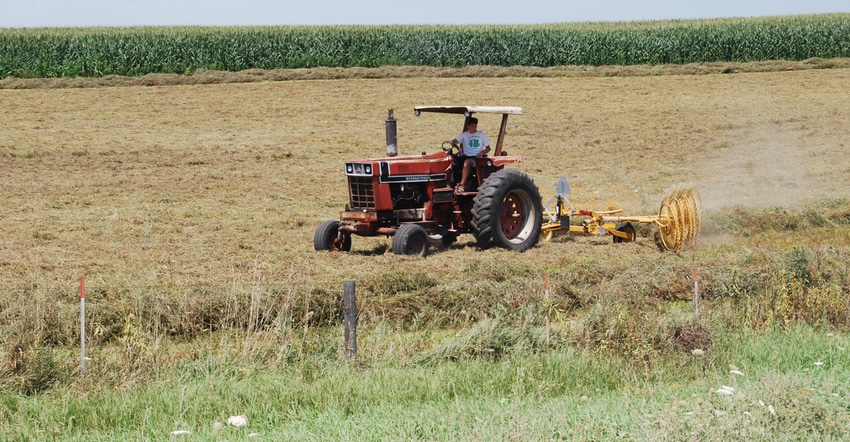September 10, 2018

This time of season there are always questions on when that last cut could be made and still allow enough time to build root carbohydrate before the killing frost. The answers to these questions are usually something like: “It’s fine to harvest through the first week of September” and “We recommend harvesting at least six weeks before the killing frost.”
On average, the alfalfa killing frost of 25 degrees F in northeast Iowa occurs in the third week of October, so risk is minimal if harvesting alfalfa in northeast Iowa through Sept. 10. Killing frosts in northeast Iowa for the last few years were Oct. 31 in 2014, Oct. 17 in 2015, Nov. 12 in 2016 and Oct. 28 last year.
Best to use GDDs as guideline
While those “good old answers” still work, the more correct answer deals with growing degree days, not the calendar. Researchers now define a risk assessment of fall harvest based on alfalfa GDD (base 41 degrees).
The research says if the plants accumulate at least 500 GDD from harvest to killing frost, they should have stored enough root carbohydrate to survive the winter. A summary of this research is available at University of Wisconsin Extension.
The data from Lancaster and Beloit in southern Wisconsin would apply well to northeast Iowa. The data suggests alfalfa harvested through the first week of September is at a very low risk of winter injury, having plenty of time to replenish root carbohydrates going into the winter. A Sept. 15 harvest could start providing some risk, and a Sept. 21 harvest adds considerable risk.
These risks do not mean the entire stand would be lost, but rather a percentage of plants would likely be lost, along with a reduction in first crop yield next season because of winter injury and slowed plant recovery in spring.
Harvest before or after a killing frost?
What if you chose to harvest after the killing frost? The GDD research says if the plants do not accumulate more than 200 GDD from after harvest to before the killing frost, the plants should still overwinter. This means you do not have to wait for the actual killing frost to occur if you are close enough to it when you harvest.
For example, Oct. 15 is a good cutoff date if the killing frost has not yet occurred, because it likely will soon, and the weather in late October is usually cold enough that 200 GDD will not accumulate in the time remaining in the fall. So harvest before the killing frost under what is usually better harvest conditions, then after the killing frost. A critical issue with harvesting near or after a killing frost is that little to no regrowth will occur following the harvest, so you want to cut high to leave at least a 6-inch stubble to trap snow and insulate the plants during winter.
Lang is the ISU Extension field agronomist at Decorah on northeast Iowa. Contact him at [email protected].
About the Author(s)
You May Also Like






